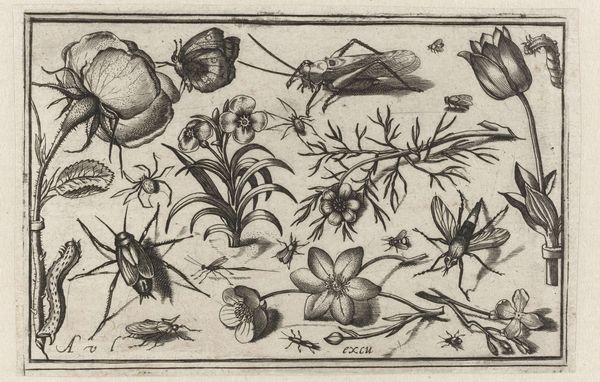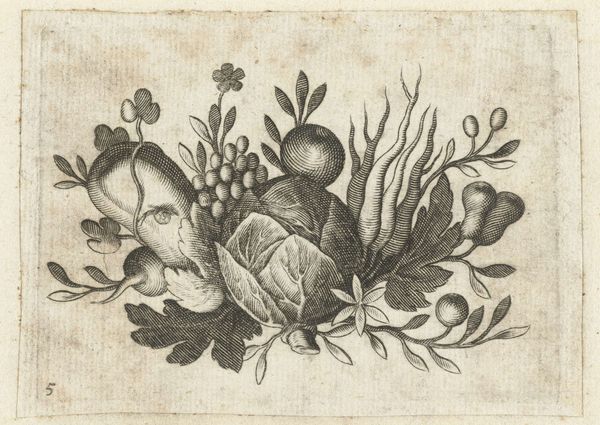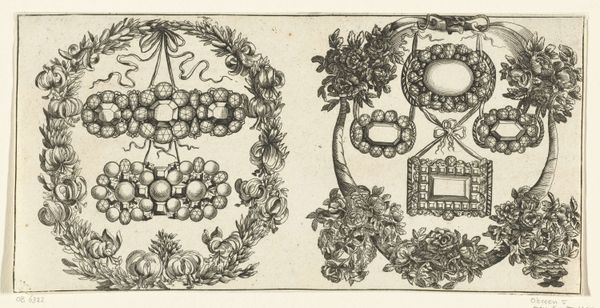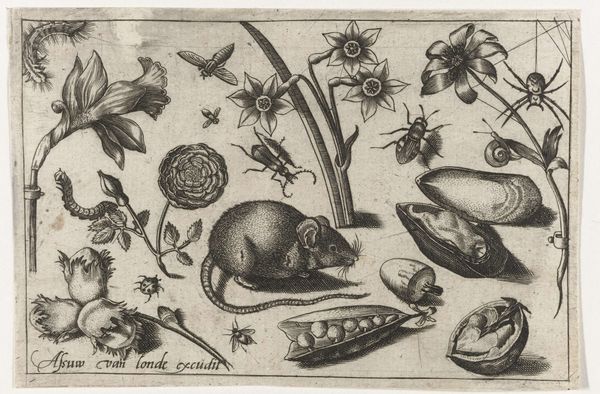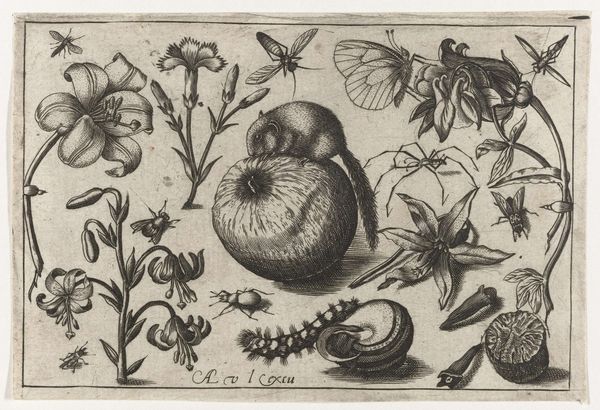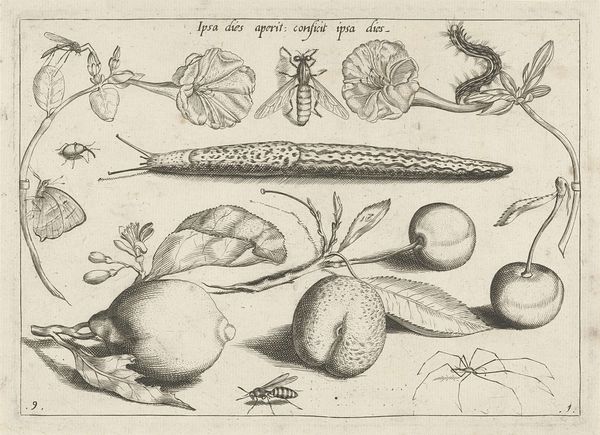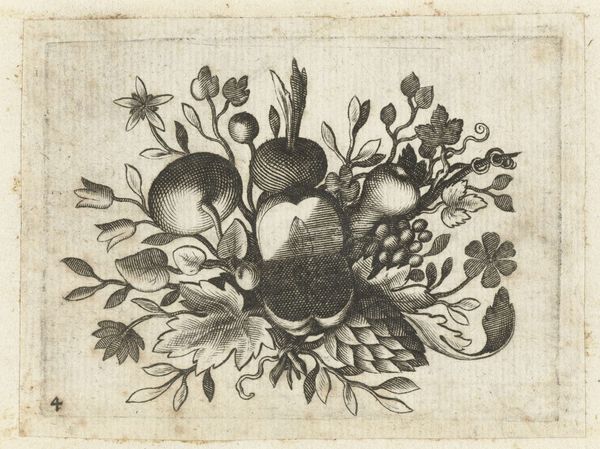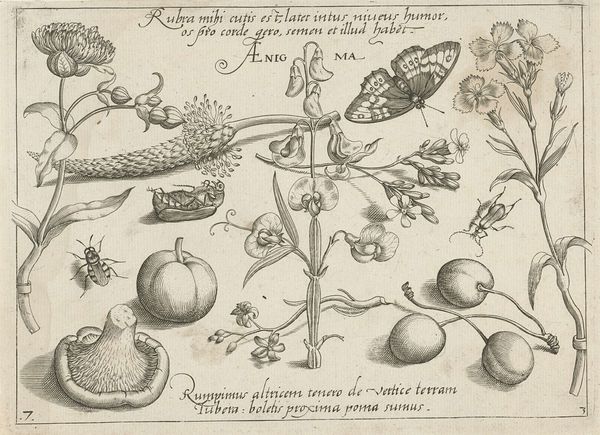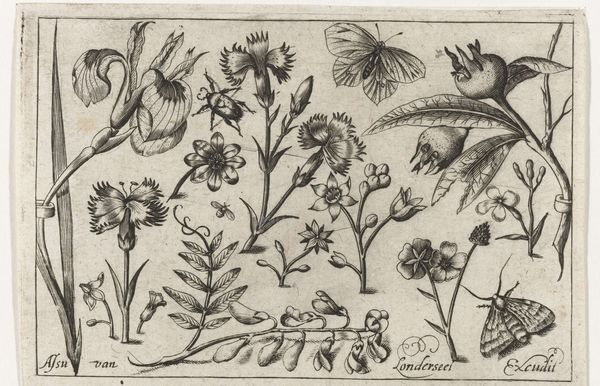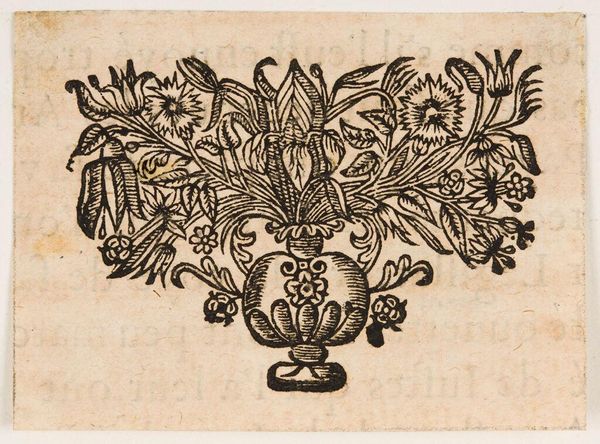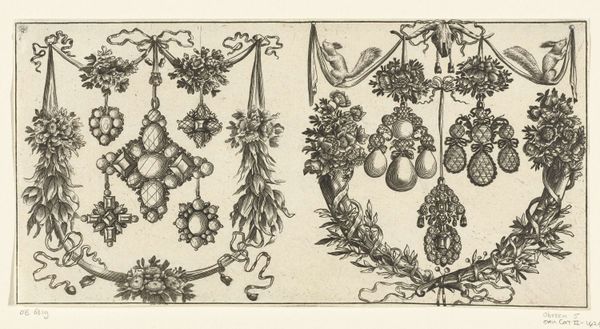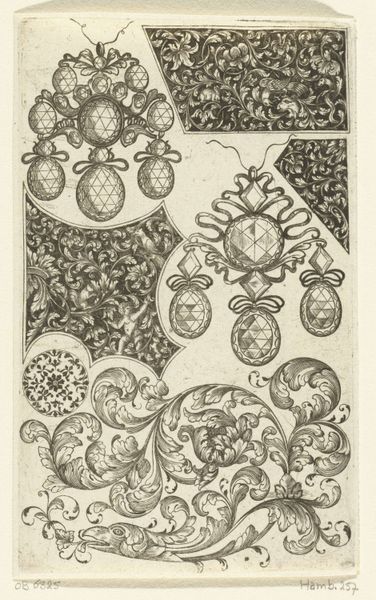
drawing, print, etching, ink, engraving
#
drawing
#
pen drawing
# print
#
etching
#
flower
#
figuration
#
11_renaissance
#
ink
#
geometric
#
northern-renaissance
#
engraving
Dimensions: height 94 mm, width 138 mm
Copyright: Rijks Museum: Open Domain
Editor: This print, “Two Vases with Flowers, Butterfly and Caterpillars,” created in 1594 by Nicolaes de Bruyn, shows an intricate display of flora and fauna. I'm really drawn to the symmetry and detail of the engraving. What do you see in this piece beyond its obvious botanical illustration? Curator: Beyond the naturalism, I perceive a carefully constructed allegory. Think about the symbolism embedded in each creature. The flowers in their vases suggest cultivated beauty and perhaps even a vanitas motif, a reminder of life's fleeting nature. But what about the insects? Do they represent something more? Editor: I suppose the butterfly could symbolize transformation and the soul, but the caterpillars seem less straightforward. Curator: Precisely. Caterpillars, often seen as destructive, can also represent potential and growth, albeit in a less conventionally beautiful form. They, like the flowers, are part of the cycle of life. Note, too, that their inclusion reflects a broader fascination of the era. Artists in the Northern Renaissance explored the relationship between man and nature. How does this microcosm reflect societal attitudes? Editor: That’s interesting, it’s like they’re observing the world and reminding us of our place within its changing cycles. I guess it is pretty poignant, that juxtaposition of beauty and… well, less traditionally beautiful things. Curator: Indeed, consider also the cultural memory associated with certain blooms. Each flower likely held specific connotations in the 16th century, weaving another layer into the narrative. We only grasp fragments of it today. What lasting impression does this print leave on you now? Editor: I see now that the piece invites us to reflect on both beauty and transience, and encourages us to really *look* at the small details of the world around us. Curator: Agreed. De Bruyn has provided more than just botanical illustration; he has delivered a silent poem ripe with imagery.
Comments
No comments
Be the first to comment and join the conversation on the ultimate creative platform.
